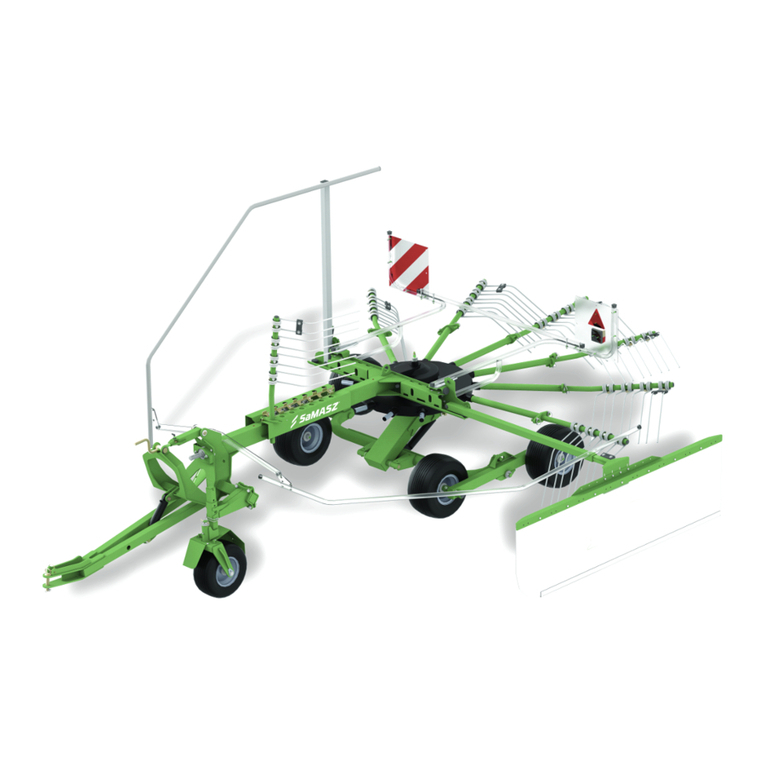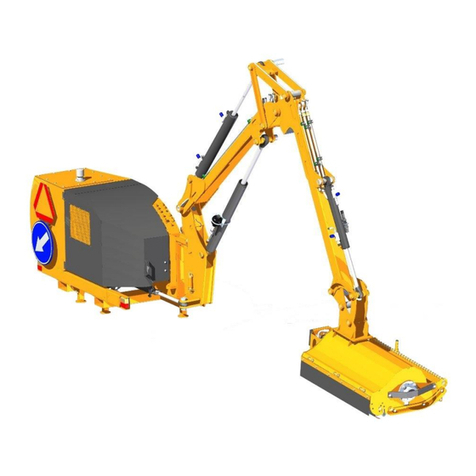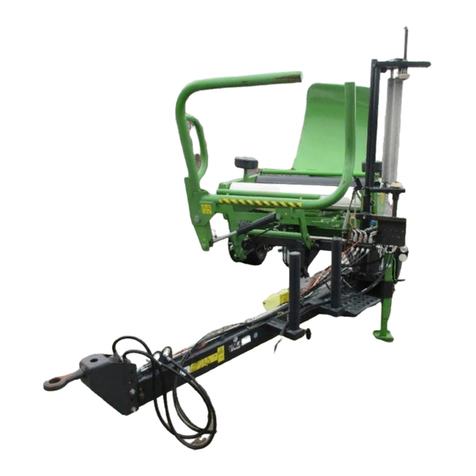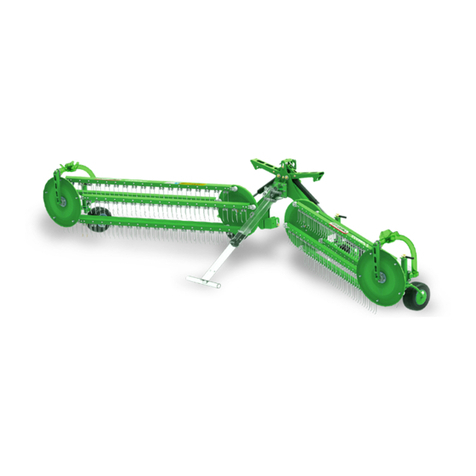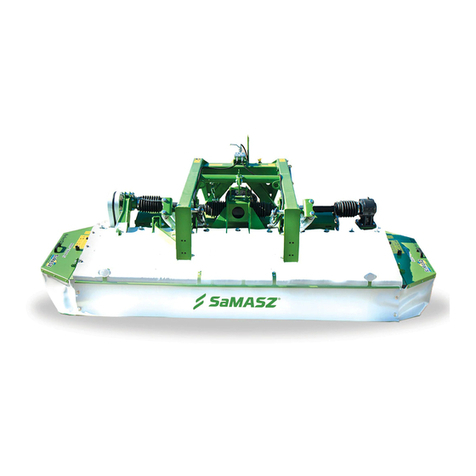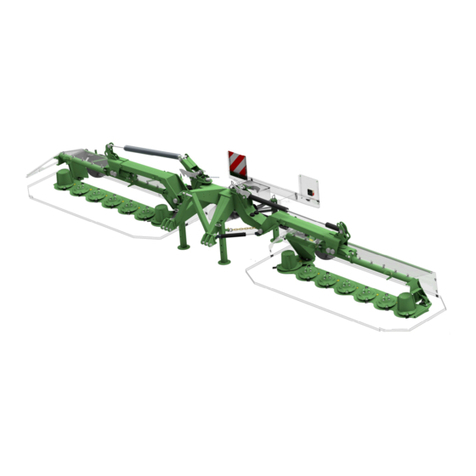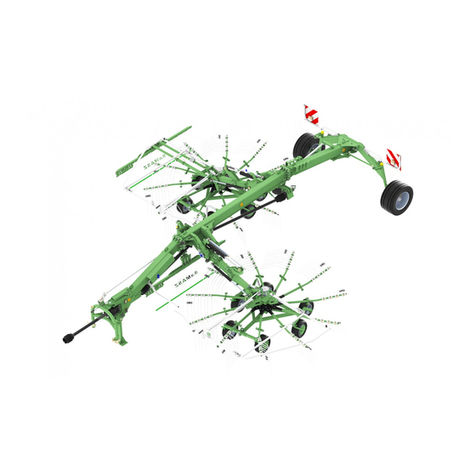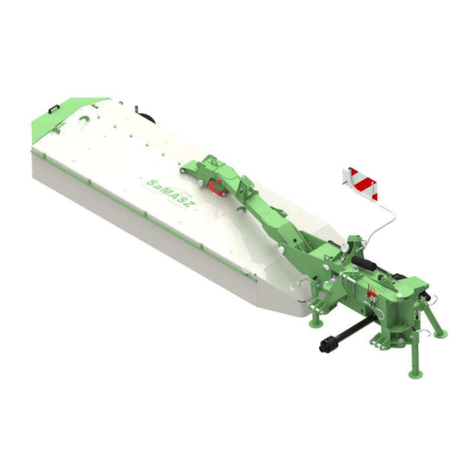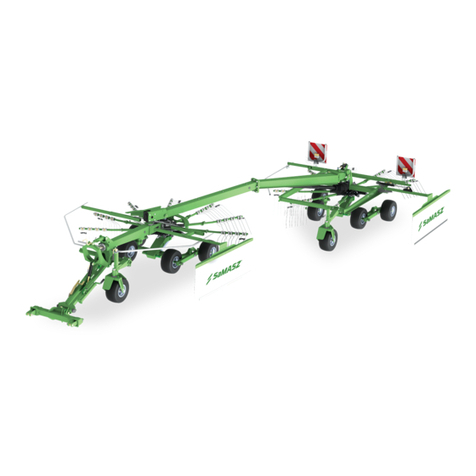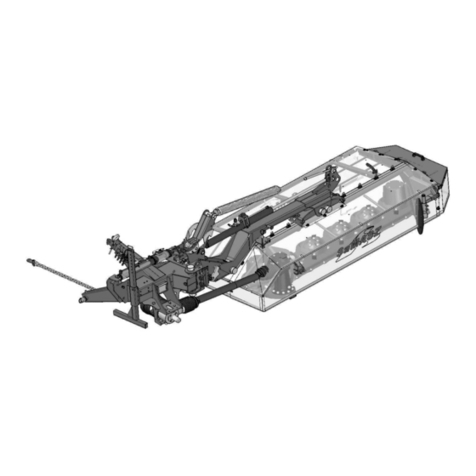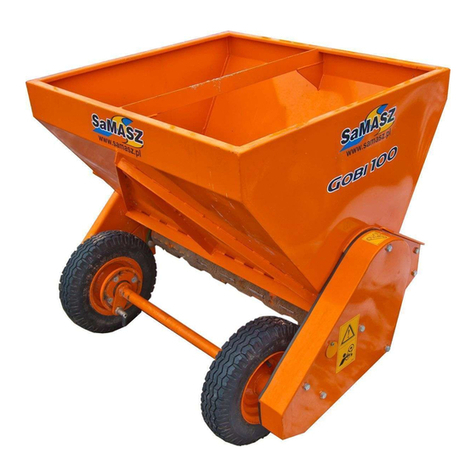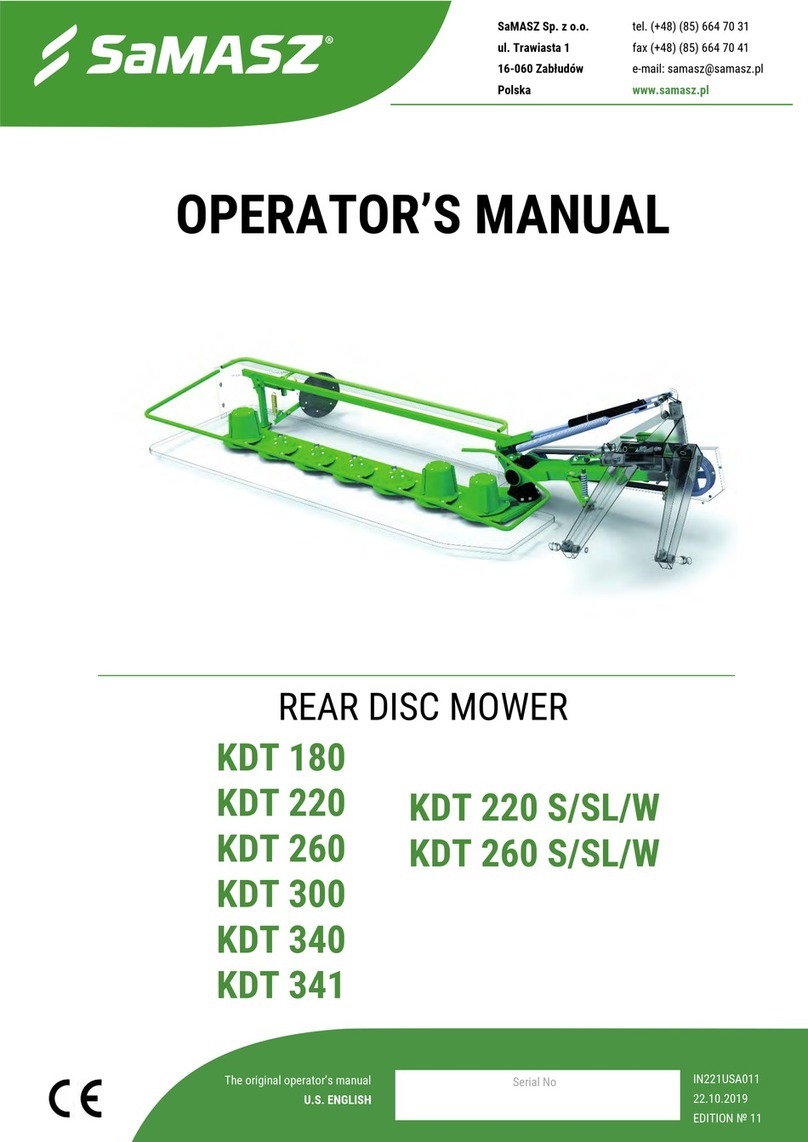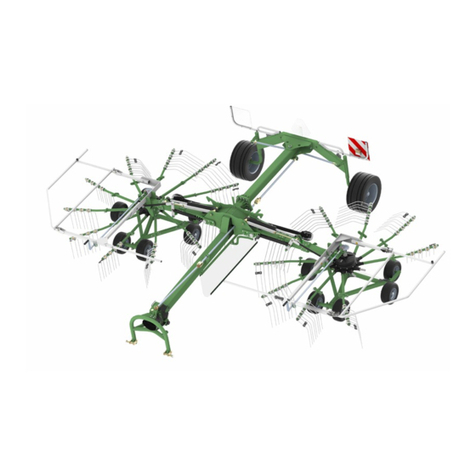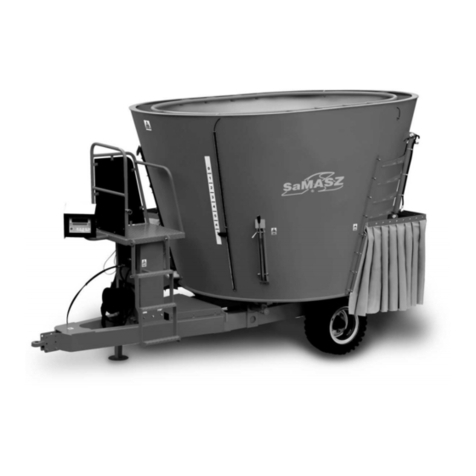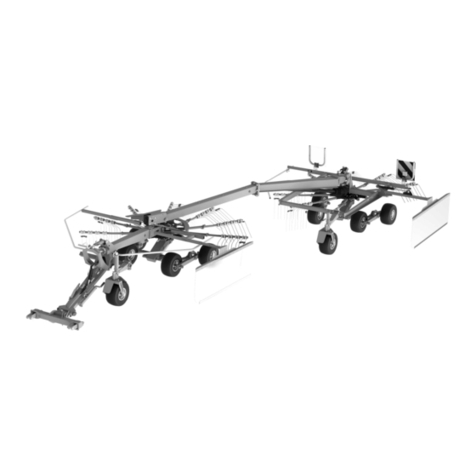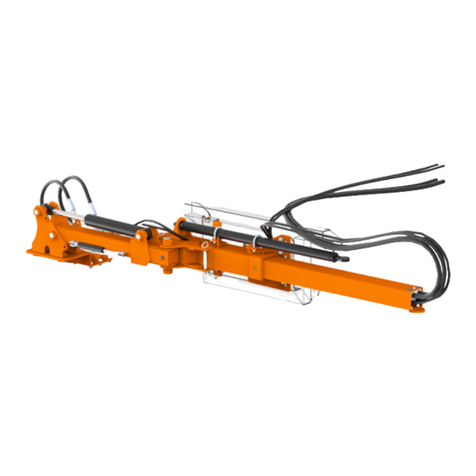
Operator’s manual
Double-sided disc mowers
with central suspension
- 1 -
Contents page
1.
IDENTIFYING THE MACHINE ....................................................................... 3
2.
INTRODUCTION................................................................................................. 3
3.
PROPER AND INTENDED USE........................................................................ 4
3.1.
Technical data...........................................................................................................................5
3.2.
Design and working principle ..................................................................................................7
3.2.1.
Double-sided disc mowers without swath conditioner/rollers ..........................................7
3.2.2.
Double-sided disc mowers with tine conditioner..............................................................8
3.2.3.
Double-sided disc mowers with roller conditioner. ..........................................................9
3.2.4.
Belt conveyors...................................................................................................................9
3.3.
Standard equipment and spare parts.......................................................................................10
4.
SAFETY PRECAUTIONS................................................................................. 12
4.1.
General safety rules and regulations.......................................................................................12
4.2.
Conditions of mounting mower on tractor .............................................................................14
4.3.
Transport.................................................................................................................................14
4.3.1.
Putting the mower onto another vehicle for transport.....................................................14
4.4.
Working parts.........................................................................................................................16
4.5.
PTO shaft................................................................................................................................16
4.6.
Hydraulic assembly................................................................................................................16
4.7.
Safety curtains........................................................................................................................17
4.8.
Residual risk...........................................................................................................................17
4.8.1.
Danger of machine entanglement....................................................................................17
4.8.2.
Danger of cutting injury ..................................................................................................17
4.8.3.
Danger of injury from liquid ejection out of hydraulic system.......................................18
4.8.4.
Forbidden actions............................................................................................................18
4.8.5.
Residual risk assessment .................................................................................................18
4.9.
Safety labels and their meaning..............................................................................................18
4.10.
Design and operation of safety breakaway device...............................................................23
5.
OPERATION....................................................................................................... 24
5.1.
Attaching the mower to the tractor.........................................................................................24
5.1.1.
Connecting hydraulic hoses.............................................................................................25
5.1.2.
Mounting PTO shaft........................................................................................................26
5.2.
Control panel..........................................................................................................................27
5.2.1.
Setting mower in transport position on headlands ..........................................................28
5.2.2.
Setting mower in vertical transport position ...................................................................28
5.2.3.
Starting the conveyer’s belt.............................................................................................29
5.3.
Preparing the mower for transport..........................................................................................29
5.4.
Preparing the mower for transport on public roads................................................................30
5.5.
Moving from transport to operating position .........................................................................31
5.6.
Preparing mower for operation – mower with hydro-pneumatic support..............................31
5.7.
Preparing the mower for work................................................................................................32
5.7.1.
Regulation of cutterbar's pressure on the ground by means of support springs..............33
5.8.
Operation (mowing) ...............................................................................................................34
5.8.1.
Essential information concerning mowing......................................................................34
5.8.2.
Mower clogging ..............................................................................................................35
5.8.3.
Taking turns on headlands...............................................................................................35
5.9.
Storing ....................................................................................................................................36
6.
MOUNTING AND ADJUSTMENTS............................................................... 36
6.1.
Mounting and timing of the knives ........................................................................................36
6.2.
Replacing the knives...............................................................................................................37
6.3.
Adjusting the cutterbar ...........................................................................................................37
